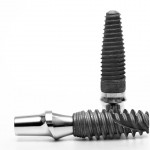
Loss of molar teeth leading to edentulous posterior jaws is a common clinical presentation which may cause occlusal interference and masticatory problems. Expansion of the maxillary sinuses and resorption of alveolar bone following tooth have led to the development of dental implants, short typically 5-8mm long to aid restoration with studies demonstrating acceptable survival rates.
The aim of this review was to compare the outcomes between short implants (5-8 mm) and long implants (≥10 mm) with a bone-augmented procedure in the posterior jaw.
Methods
Searches were conducted in the Medline/PubMed, Embase and Cochrane library databases. Randomised controlled trials (RCTs) published in English comparing short implants (5-8 mm) or long implants (≥10 mm) with a bone augmentation procedure in the posterior atrophic maxilla and mandible with follow-up of at least 1 year were considered. Studies that treated patients with fixed full dentures or overdentures were excluded. Two reviewers independently extracted data and assessed study quality using the Cochrane risk of bias tool. The risk ratio (RR) and 95% confidence interval (95% CI) were used for binary data and while the mean, standard deviation (SD) and 95% CI were used for continuous data. A quantitative meta-analysis was conducted on the survival rate, marginal bone loss changes and complications.
Results
- 10 RCTs (984 implants, 478 short implants and 506 long implants) were included
- 1 study was considered to be at low risk and 9 at unclear risk.
- The fixed-effect meta-analysis (10 studies) showed no significant difference in the survival rate between short implants and long implants with a bone augmentation with at least a 1-year follow-up period RR = 1.01 (95%CI; 0.99 to 1.03).
- Random effects meta-analysis (10 studies) found marginal bone loss to be significantly smaller than that of long implants with bone augmentation, Mean difference = −0.13 (95%CI; −0.20 to −0.06).
- Random effects meta-analysis (10 studies) showed that complications of short implants were not significantly different from those of conventional implants RR= 0.48 (95%CI; 0.20 to 1.17).
Conclusions
The authors concluded: –
Short implants (5-8 mm) had a survival rate and complications similar to long implants (≥10 mm) placed in the augmented bone area of posterior jaws at least 1-year post-loading. The marginal bone loss changes at the short implant sites were significantly lower than at the long implant sites. Short implants can be an alternative for the rehabilitation of atrophic posterior jaws. Nevertheless, more studies, especially high- quality RCTs, are needed to draw a more reliable conclusion.
Comments
We have previously looked at a review comparing long and short dental implants (Dental Elf – 5th Apr 2019) which reported outcomes from a small number of studies at up to 5 years. This new review addresses a narrower question but only reports outcomes at 1 year. While a good range of databases has been searched the inclusion of only papers published in English means that some relevant studies could have been excluded. Only one of included studies was at low risk of bias for all the domains assessed the remaining studies were all rated as unclear for at least one domain. This was the blinding of participants and study personnel because this is difficult to achieve the authors considered that all the included studies were at low risk of bias however some may take a different perspective. While the review suggests no difference between long and short implants with bone augmentation the reported findings are only after one year. With good long-terms survival of implants at 10 years and the results of longer-terms studies are needed to see if the findings hold true in the longer term.
Links
Primary Paper
Chen S, Ou Q, Wang Y, Lin X. Short implants (5-8 mm) vs long implants (≥10 mm) with augmentation in atrophic posterior jaws: A meta-analysis of randomised controlled trials. J Oral Rehabil. 2019;46(12):1192–1203. doi:10.1111/joor.12860
Other references
Dental Elf – 5th Apr 2019
Dental Elf – Short dental implant blogs

I am a patient who recently had implants #18 and 19 lower molars fail after infection and bleeding. I have been to 2 oral surgeons and a well known periodontist. The first oral surgeon said I am inoperable because of bone loss. He wants to do a 10mm implant but there is only room for 8, which he thinks would be unstable long term for chewing. He says a bone graft will not give me anymore height. The perio said he wants to replace my current bone graft with a tissue bank bone graft with biologic for $9,500 that will increase bone density and allow a 9mm implant. The 2nd oral surgeon says that you can’t increase height above the premolar next to the implants. He wants to wait until the implant holes heal, which he says went through the jaw, causing the bleeding. Then he will do a splinted implant at the crowns over the implants, which will make them more stable. What do you think? I don’t know what to do. Thanks.